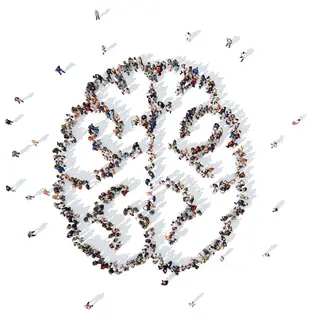Credit: dan carlson
Paper is the first to examine the effect of experience on performance variability
CAMBRIDGE, Mass., August 6, 2020 – Learning curves show that experience improves average productivity. But is there a learning curve for consistency? With experience, does task performance become more consistent? Or is there still a wide variability in completion times, even if the times improve on average? In the first study to address the variance learning curve, MIT Sloan School of Management Prof. Jónas Oddur Jónasson and his colleague Hessam Bavafa of the University of Wisconsin-Madison found that experience significantly improves consistency. Further, they showed that the benefits of learning curves in service systems are “substantially underestimated” when consistency effects are ignored.
“It’s important to understand the impact of learning curves on consistency because the time it takes to complete a task is a signal of competency across most jobs. It also has practical implications for operational decisions such as staffing and scheduling,” says Jónasson.
He points to surgeries as an example. “The more often a surgeon performs a routine procedure, the faster the average completion time. But does each procedure take one hour to complete, or do the procedures take anywhere from 15 minutes to two hours to complete? What is the spread around the average time? This is critical information not only for the patient, but also for the scheduling of operating rooms.”
In their study, the researchers collaborated with the London Ambulance Service to examine whether performance becomes more consistent due to a consistency learning curve. They looked at a decade of data to examine how experience affected the mean and variance of paramedic performance as they pick up patients and bring them to hospitals.
In line with current literature, they found that learning curves improve average productivity. Paramedics with lower experience improved by 1.7%-2.8% after experiencing 500 patient calls. In addition, they observed diminishing returns to increased experience.
More importantly, they found a “significant impact” of experience on performance consistency, which they call the variance learning curve. The study showed that the variance of paramedic performance was initially reduced by 3.7% - 8.7% with 500 additional jobs. After that, they found diminishing effects of increased experience on consistency.
“Our study revealed that if you don’t consider the impact of experience on performance variability, you would underestimate the benefits of the learning curve in service systems by as much as 4%,” says Jónasson. “This could impact staffing, scheduling, and service system performance.”
He adds, “This is a significant contribution to operations management research, which seeks to identify factors that contribute to productivity. Our study provides a fundamental insight about the operational learning curve. It also has practical implications because variability is a driver of system performance in most service systems and manufacturing systems.”
Jónasson and Bavafa are coauthors of “The variance learning curve,” which has been accepted for publication in Management Science.
About the MIT Sloan School of Management
The MIT Sloan School of Management is where smart, independent leaders come together to solve problems, create new organizations, and improve the world. Learn more at mitsloan.mit.edu.



